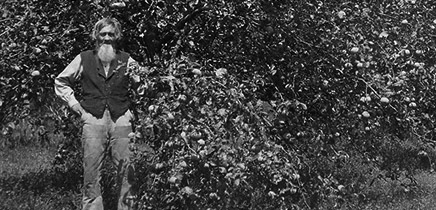The historic Watertown Bridge (Bridge 5882), which was demolished in 2014, was constructed in 1939. It was located near the central business district of the City of Watertown, and carried two lanes of Territorial Street over the South Fork of the Crow River.
In early 1939, the federal Public Works Administration (PWA) granted funds to replace a 50-year-old iron truss bridge in the city of Watertown. The bridge construction contract was given by the Carver County Board to the Theodore Jensen Company of St. Cloud for $33,007. Registered by Theodore Jensen of Denmark (born 1895), the Theodore Jensen Company had been responsible for past bridge building projects in Minnesota. Examples include the construction of Bridge 4912 (an 85 foot steel truss span) and Bridge 4915 (a 60 foot steel truss span) between Glencoe and Hutchinson; and a grade separation bridge over the Minnesota Western Railway in Watertown. Construction of the Watertown Bridge began the second week of April 1939. On August 4, it was dedicated in front of a large crowd.
The bridge was a steel stringer bridge structure, 144.5 feet long and 38 feet wide, with two 12 foot lanes, 3 foot shoulders, and a 6 foot pedestrian sidewalk on the south side. The bridge structure was comprised of two reinforced concrete abutments, with reinforced concrete wing walls and two concrete piers on spread footings across the river. The piers were faceted on both upstream and downstream faces. The superstructure of the bridge included three simple spans, with an Art Deco style that was characteristic of the Minnesota Highway Department’s standard urban bridges of the period (1930s-40s). The three spans were nearly identical, except that the steel I-beam stringers of the central span were slightly longer than those of the two end spans. Along the south side of the bridge’s east-bound lane ran a reinforced concrete sidewalk. The bridge had 273 linear feet of ornamental railings. The railings were painted black and supported by four concrete square end posts that extended above the abutments and four intermediate polygonal posts that extended above the piers. The endposts of the bridge supported four ornate Classical Revival style lap standards that bore a plate reading “Union Metal, Canton, Ohio”.
Throughout the following decades, the bridge was used for automobile traffic. It the 1990s, it was determined eligible for the National Register as part of the statewide Minnesota Historic Bridge Inventory. After a large amount of discussion and debate, it was ruled that the bridge needed to be removed for safety. The bridge was torn down in 2014 and a new one was constructed.


